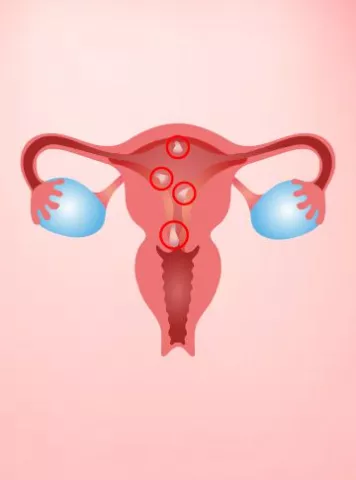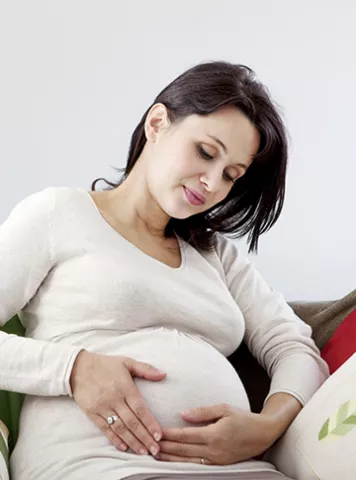What is multiple pregnancy?
Multiple pregnancies result in multiple births. It is a condition in which the pregnant woman delivers two or more offspring. It may happen when a single fertilised egg splits into identical foetuses or when more than one egg gets released during the menstrual cycle and all of them get fertilised or due to the combination of both these conditions.
What causes multiple pregnancy?
Identical twins are natural and their frequency is one in 330+ pregnancies. However, several factors are linked to multiple pregnancies. Let us take a glance at them.
Maternal age and previous pregnancy history
The probability of giving birth to twins increases with maternal age and the previous number of pregnancies. Women who are between 35-40 years of age and already have four or more offspring are likely to given birth to twins than women who do not have any children and are under 20.
Heredity
Biological inheritance or heredity can be the reason behind multiple pregnancies. In case there is any family history of multiple births, it increases the odds of having twins. When it comes to heredity, family history of mother holds more significance than the family history of father.
Symptoms of multiple pregnancies
Mentioned below are the symptoms of twin pregnancy or multiple pregnancies that women can look for:
Morning sickness
Nausea and vomiting are other names of morning sickness and a very common feature in early pregnancy (the first trimester). Females carrying twins are likely to experience a higher level of nausea and vomiting.
High hCG
A woman’s body produces hCG or human chronic gonadotropin during pregnancy, which is a hormone that a home pregnancy test detects to let the woman know if she is pregnant. A pregnancy kit tells about the pregnancy but it cannot reveal about the hCG level in the body. A woman with multiple pregnancies tends to have higher than expected hCG count than a woman with a normal pregnancy.
Weight gains
Women with multiple pregnancies tend to gain more weight than those carrying a single baby only. Nevertheless, it is not a strong symptom of twin pregnancy as an increase in weight becomes noticeable only after the second trimester.
Bigger baby bump
Another symptom to look out for is the bigger baby bump. In a normal pregnancy, the bump starts becoming prominent after 12 to 16 weeks of pregnancy. However, in case of multiple pregnancies, the uterus expands more than usual as it contains two or more babies, increasing the size of the baby bump.
Increase in appetite
It is quite natural because when a woman carries more than one baby, the nutritional needs of growing foetus increase. As a result, the woman feels a sudden increase in her appetite.
All these symptoms are subjective and likely to differ from person to person. In case a woman is diagnosed with multiple pregnancies, she will need a lot of care and support through her pregnancy term.
Articles
2023


World AIDS Vaccine Day 2023: Can HIV & AIDS affect fertility or your infant’s health?
World AIDS Vaccine Day is observed every year on the 18th of May to create awa...
2023


Male Infertility Infertility Tips
Hyperspermia: Causes, Symptoms, Diagnosis & Treatment
What is Hyperspermia? Hyperspermia is a condition where an individual produ...


Guide to infertility treatments Infertility Tips
पीआईडी: पेल्विक इनफ्लैमेटरी डिजीज और निःसंतानता
पीआईडी - पेल्विक इनफ्लैमेटरी �...
2022


Infertility Tips Uterine Fibroids
Endometrial Polyps (Uterine Polyps)
What are Endometrial Polyps (Uterine Polyps)? Endometrial polyps, often ref...
2022


Female Infertility Infertility Tips
Why do You Need Fertility Treatment
As we all know infertility rate is constantly rising in our society day by day...
2022


Cesarean Section Vs Natural Birth
Surrogacy centers in Delhi and Infertility centers in Pune state that there ar...
2022


ನಿಮಗೆ ಹುಟ್ಟಲಿರುವ ಮಗುವನ್ನು ಅರ್ಥಮಾಡಿಕೊಳ್ಳುವುದು: ಗರ್ಭದಲ್ಲಿ ಮಗು ಹೇಗೆ ಬೆಳೆಯುತ್ತದೆ!
ವೀರ್ಯವು ಮೊಟ್ಟೆಯನ್ನು ಭೇಟಿಮಾಡ�...
2022


Diet Chart for Pregnant Women: The Right Food for Moms-To-Be
Pregnancy Food Chart 1. The daily diet must include the right amount of pro...
2022


Can i become pregnant while my tubes are tied?
Pregnancy is one of the most important phases in women’s life and is conside...
Pregnancy Calculator Tools for Confident and Stress-Free Pregnancy Planning
Get quick understanding of your fertility cycle and accordingly make a schedule to track it















